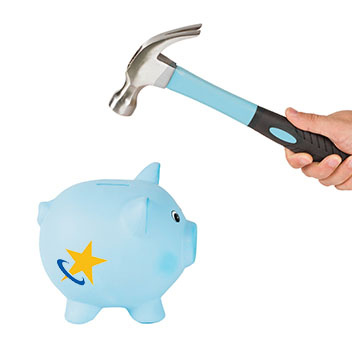- Falling into default on your student loan can cause significant challenges.
- Skipping payments may result in wage garnishment, constant calls from collectors, a drop in credit score, or even legal issues.
- Staying current with payments is essential, but if money is tight, consider exploring repayment plans.
- Options like loan consolidation, rehabilitation, or discharge might help you resolve a default.
- Don’t delay reaching out to your loan servicer or other helpful resources to learn about your choices and get back on the right path.
Note: If you consolidate federal loans together with private loans using a private lender, you may forfeit benefits you had with your federal loans.
Refinance Your Student Loans
Refinancing your student loans with a private lender is the only way to potentially get a lower interest rate. Student loan refinance rates are based on market trends. The rate you qualify for will depend on the creditworthiness of you or your cosigner.
With a student loan refinance you may also choose your repayment term. A longer repayment term may help to reduce the amount of your monthly payment. Just remember the longer your repayment term, the more you will be paying in interest over the life of your loan.
You may include both federal and private student loans, any combination of the two, or even just one single loan in a student loan refinance. Refinancing works similarly to consolidation; whichever loans you choose to refinance will be rolled into one new loan. If you include federal student loans in a private student loan refinance, you will forfeit your federal student loan benefits.
How to Get Student Loans Out of Default
Once you are in student loan default, you need to come up with a plan to get out. Defaulting on a student loan can have serious consequences that affect you for years to come.
Repay Your Student Loans in Full
If your student loan is in default, you are required to repay the full amount immediately. However, most defaulted borrowers cannot afford this upfront payment. Make regular payments on your loan, even in default, to avoid extra fees. Another option is a student loan settlement, but don't anticipate significant savings from this arrangement.
Student Loan Rehabilitation
Student loan rehabilitation applies to federal student loans exclusively. To start the rehabilitation process, you need to reach out to your loan servicer. If unsure about your servicer, log in to your MyFederalStudentAid account for details. During a ten-month period, you may agree in writing to make nine monthly payments within 20 days of the due date.
Your servicer will calculate the monthly payments based on 15 percent of your annual discretionary income divided by 12. If these payments are unmanageable, request your servicer for an alternative payment plan. Ensure you have proof of your monthly income and expenses ready when making this request.
Once you have completed the nine monthly payments, your loan will be rehabilitated. This means that any negative marks on your credit report related to the defaulted loan will be removed. However, keep in mind that late fees and collection costs may still apply. In addition to improving your credit score, student loan rehabilitation may allow you to regain eligibility for benefits such as deferment.
Loan Rehabilitation vs Consolidation
The following table applies to federal student loans only.
| Benefit Regained | Loan Rehabilitation | Loan Consolidation |
|---|---|---|
| Eligibility for Deferment | Yes | Yes |
| Eligibility for Forbearance | Yes | Yes |
| Choice of Payment Plans | Yes | Yes - with limitations |
| Eligibility for Loan Forgiveness Programs | Yes | Yes |
| Eligibility to Receive Federal Student Aid | Yes | Yes |
| Removal of the Record of Default from Your Credit History | Yes – The default will be removed but the record of late payments will stay. | No |
Source: https://studentaid.gov/manage-loans/default/get-out








